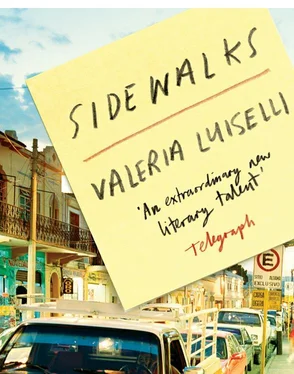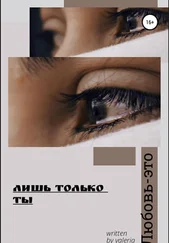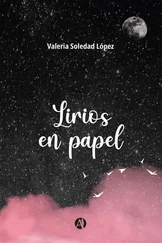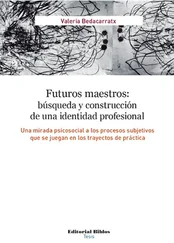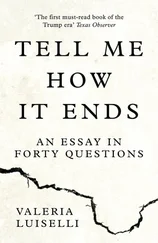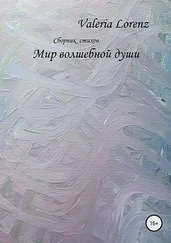Valeria Luiselli
Sidewalks
Sometimes unexpected things happen that fit together so perfectly it seems as though the ultimate computer that controls and watches over everything does exist after all. A couple of years ago, when I was in Bogotá, I received an e-mail from Karaat, a Dutch publishing house I did not know, asking me to write a foreword for a book by a young Mexican writer I had never heard of. I asked my Colombian host, the poet Pedro Alejo Gómez, who was once the Colombian ambassador to the Netherlands and now runs the Poetry House in Bogotá, if he knew her, but no, he had never heard of her either. Now, it is not the case that books by authors and poets from one Latin American country are sold or discussed in all the other countries on that continent — far from it. Which is why it came as a double surprise when that same day, in a large bookstore in Bogotá, I spotted her book: a slim, crimson edition without any adornment, just the laconic title, Papeles falsos , and her name, Valeria Luiselli.
In the days that followed, I traveled around Colombia, to Popayán and Leticia and Cartagena de Indias, with the book in my luggage, and right from the start I realized that I had treated myself to a surprise present.
There is no place better for reading than a hotel room. In tropical Leticia, on the Amazon, the light was yellowish and the room a cavernous yet stifling brick chamber with a groaning ceiling fan, but with the book I was on familiar ground, in the cemetery of Venice, beside the grave of Joseph Brodsky, which I had visited myself years ago for my book Tumbas . And perhaps that is the explanation: when you have written about something yourself, you are better able to absorb what another person writes about the same subject. But even though I had felt tremendous respect for Brodsky since once hearing him read at Poetry International in Rotterdam, Luiselli’s Brodsky was different from mine; she clearly enjoyed a far deeper affinity with him. At the cemetery of San Michele, I had gone in search of the dead, but she was looking for Brodsky. It was for him that she had gone to Venice — and that is a different kind of journey.
Luiselli may have been young (when she wrote these essays she was in her early twenties), but here was someone who could write in an extremely personal way about her quest to find an admired author, and about her stay in the city that Brodsky himself had written about so magnificently. But, once again, her Venice is a different city from his. She arrives feeling ill, finds a room in a convent, gets locked out, and contemplates sleeping on a bench. A friend helps her out and she is soon registered as a resident of the comune of Venice, with local health insurance. This may seem no more than a curious detail, but there is more to it than that. Random things happen to some people; openness is sometimes rewarded with what Luiselli herself refers to as papeles falsos, false papers, particularly when it is the kind of openness with which she views and describes the world. When you undertake a journey with Luiselli, whether in Mexico, flying above the ocean, or in New York, you are traveling with a way of seeing and thinking that belongs to another person; it is sui generis, and you are made to think in a way that is not automatically your own. You find yourself musing about the “excess of identity” that a face takes on over the course of time, about the disappointment of long-awaited first encounters with the dead and the living, about what words really are and if their meanings can win out over their letters, and about the motionlessness of maps and the tautological horror of those screens on transatlantic flights, where you can watch the icon of the plane you are sitting inside moving, one millimeter at a time, over the blue emptiness of an image of the ocean.
The tone of her writing is that of the flâneur and the philosopher, as the rhythm of her walking (and cycling — there is an entire passage about being a flâneur on a bicycle, and that in Mexico City of all places!) accompanies her thoughts about architecture and what it does to people, and about empty spaces in the city; this is thinking with a background of asphalt and sidewalk.
The influence of Europeans such as Benjamin, Kracauer, and Baudelaire is never denied, and yet all of her vivid musings retain a Mexican accent, and her openness results in the most remarkable encounters: elderly ladies, security guards, doormen, a Chinese neighbor sitting at his computer, whom she only ever looks at through her window, never exchanging a word with him. This is an idiosyncratic and solitary world that never loses its connection with the world outside.
For the urban nomad, outside has become inside, and vice versa.
What is actually going on in this book? What makes it so enchanting? Because it is, even though that word does not entirely seem to fit with what is at times a high degree of abstraction, with pertinent statements that make the reader pause after a few words and briefly tread water before rereading: “To locate the grave, the definitive inscription we’re looking for, it’s necessary to examine the veining of the marble closely.”
It must be the combination of candor and intelligence, each of which, in its own way, results in a particular method of looking and writing. You need to be good at looking in order to know where you are not, because only then do you know where you actually are. You must coolly convey your discovery of the absurd detail and master the art of hilarious understatement. You also have to be able to hear that the name “Mexican Commission on Limits” will turn your story about the Mexican Map Library — which is intriguing enough in itself even without the addition of the Commission — into a strange adventure for the reader. And then you have to write about it in such a way that the reader also sees everything: both the long, narrow corridors where “maps hang like perennially damp sheets” and the photograph of the eight members of the Commission, who resemble “the eight doctors in Rembrandt’s The Anatomy Lesson of Dr. Nicolaes Tulp. ” And this must be done with a simple flick of the wrist, suddenly transporting the painter from Leiden and Amsterdam into a Mexican map room with a maneuver that shows us, the readers, precisely what the writer means.
There is no lack of apt references in this book: Wallace Stevens and Nietzsche, Chesterton and Rousseau. . but none of these names weighs too heavily; they flow between the sentences with their own colors, fragments of a worldview that is fueled by knowledge and an erudition worn lightly, not only by the aimless wanderer who writes here, but also by the readers who allow this natural, fluid intellect to take them by the hand and lead them to unexpected places.
I have visited Mexico City often enough, but I have never seen its immensity with these eyes: “a wave of mercury that never quite breaks against the mountain range; the streets and avenues are petrified folds in an overflowing, ghostly lake.” This is her view upon landing “on that great desert lake.” Yet the tears Luiselli sheds at that moment stem not from the sight of that city far below, but from a simple resistance to the “descent to a future world,” which evokes fear and a form of sadness, and to a world laid out on a grid pattern to which she will once again have to submit. Mexico City or New York, the city as an ocean of sidewalks and buildings, as a form of puzzle on a map — the writing of the contemplative loner in the urban behemoth is never entirely free from melancholy.
Essays have no plot, travel books (Chatwin, Theroux) sometimes do, and then there is also the travel book as a collection of essays, and the essay that involves traveling and looking. If my eccentric system of classification applies, then Sidewalks belongs to the last of these categories. Evidently Rousseau’s Reveries of a Solitary Walker served as an inspiration for Luiselli, because even though nature has now turned to stone, a romantic element still remains in this city of millions: the moment of the creative void, of the “relingos,” which she defines in the same breath as “absences in the heart of the city” and “everything we haven’t read.” That should be easy enough to resolve. But the twist is a different one: if there is no writing, there can be no reading. So this is about writing as the creation of emptiness: “A writer is a person who distributes silences and empty spaces.”
Читать дальше
